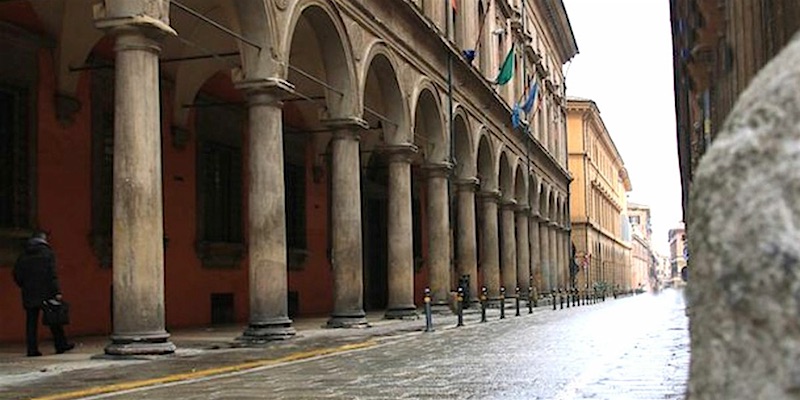The palace, designed in the mid 16th century probably by Pellegrino Tibaldi with the contribution of Bartolomeo Triachini, who is attributed in particular the inner courtyard, became the new seat of the National University, after the reform of Napoleon's period (1803). The academic vocation of the building was already announced at the onset of the previous century by the opening in its premises of the Institute of Sciences founded by Luigi Ferdinando Marsigli. In the 19th and 20th centuries the original structure was adjoined with the 15th-century Cà Grande dei Malvezzi and the Library designed by Carlo Francesco Dotti and inaugurated in 1756. Eight rooms decorated with friezes on the main floor, the ceilings by Pellegrino Tibaldi on the ground floor and many ceilings with grotesque and frescoes on the fireplace make this palace one of the most fascinating private family decorative compounds in northern Italy. In the late 1740's decorations by Nicolò dell'Abate with secular themes were added (Rooms of Camilla, Landscapes, Concerts, harvesting Putti), followed - still in the main floor - by a religious decoration from the Old Testament, consistently with the personality of Giovanni Poggi who in 1551 was elected cardinal. On the ground floor the rooms of the Academy of Sciences are decorated with frescoes by Pellegrino Tibaldi with stories of Ulysses where the Mannerist painter created daring perspective views and figures in Michelangelo's style to exalt faculties of human intellect. Inside the compound of Poggi Palace the following should be noted:
Aula Carducci the lecture hall where Giosuè Carducci, who held the chair of Italian literature from 1860 onward, lectured his studentsMusei UniversitariSpecola, designed in 1712 by G. A. Torri and later completed by C. F. Dotti, was originally used for astronomical observations by the Institute of Sciences; today it houses the Museo della Specola (Museum of Astronomical Observatory)
Are you a local? What do you think about Palazzo Poggi?
Login to suggest it!


